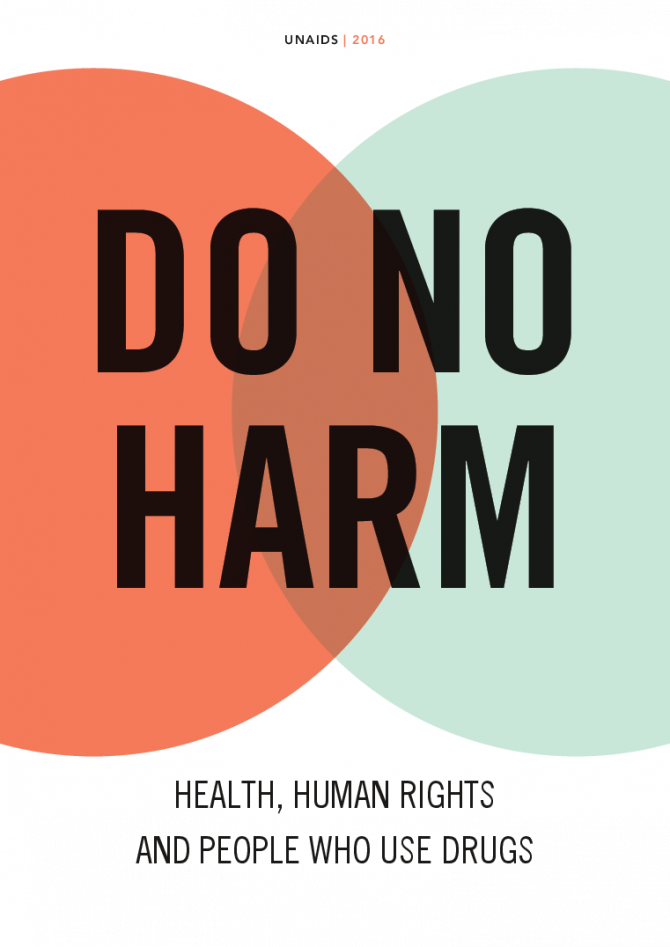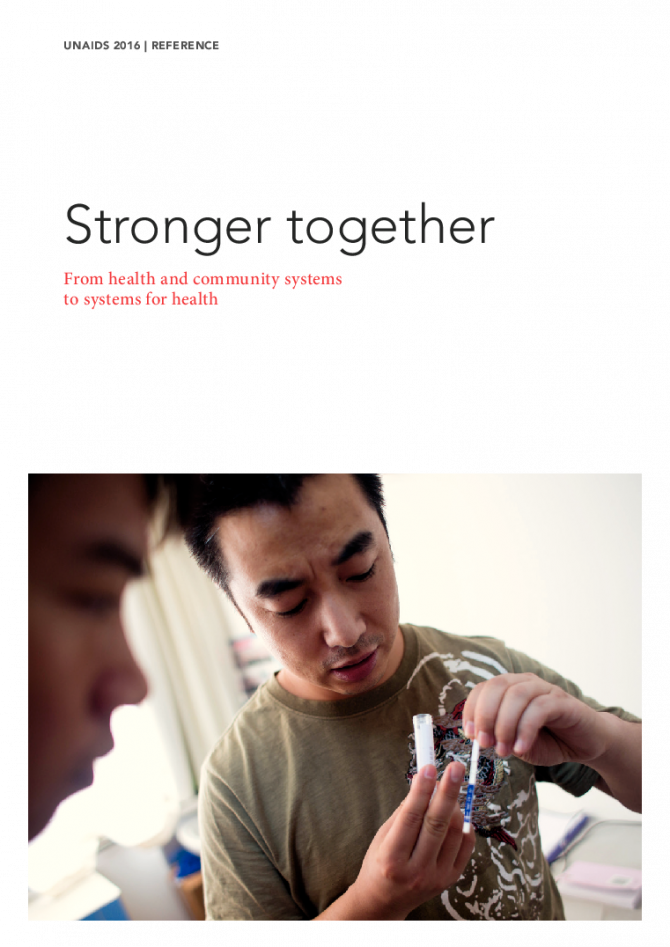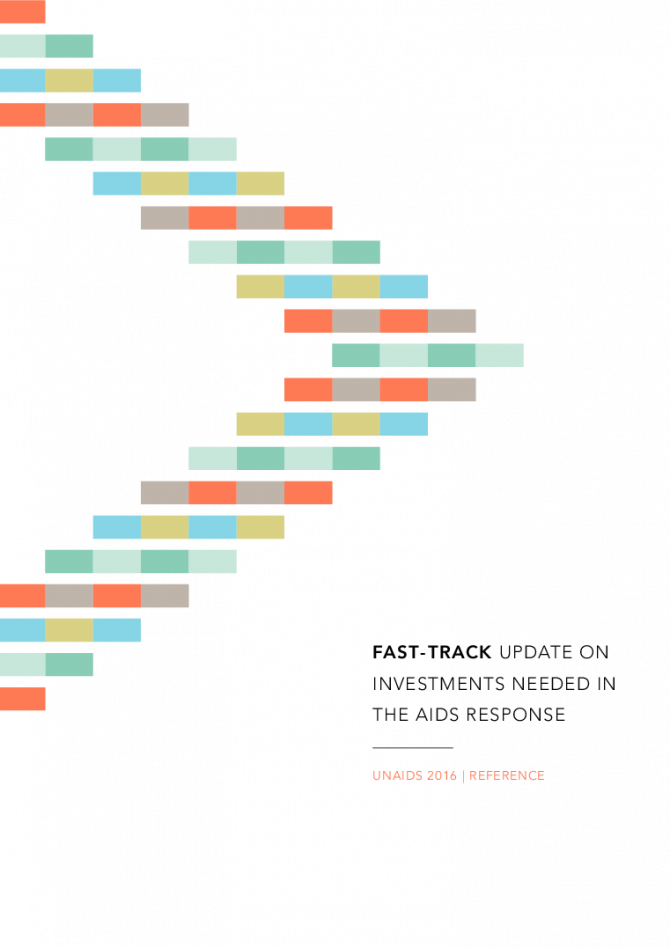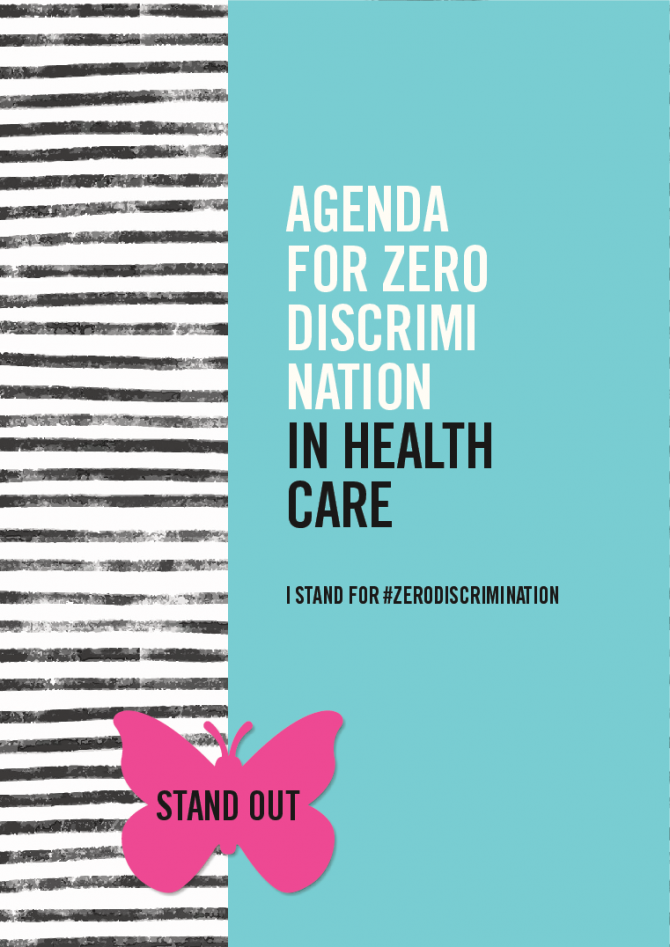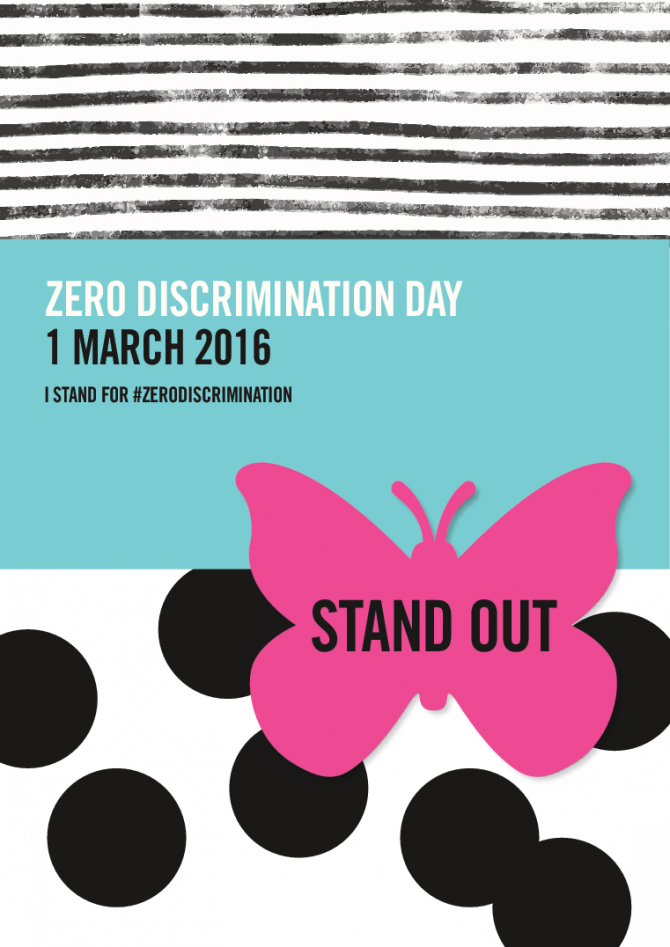Documents
Fast-Tracking combination prevention
19 October 2015
Documents
Do no harm - Health, human rights and people who use drugs
15 April 2016
Evidence supports the need for a shift in the global approach to drug use. In this report, Do no harm: health, human rights and people who use drugs, UNAIDS shows what works to reduce the impact of HIV and other harms related to drug use. Countries that have moved away from laws and policies that are harmful to people who use drugs and that have increased investment in harm reduction have reduced new HIV infections and improved health outcomes. These policies also deliver broader social benefits, such as lower levels of drug-related crime and reduced pressure on health-care and criminal justice systems.
Documents
Implementing comprehensive HIV and STI programmes with transgender people: practical guidance for collaborative interventions
06 April 2016
This tool describes how services can be designed and implemented to be acceptable and accessible to transgender women. To accomplish this, respectful and ongoing engagement with them is essential. This tool gives particular attention to programmes run by transgender people themselves, in contexts where this is possible. It is itself the product of collaboration among transgender people, advocates, service-providers, researchers, government officials and non-governmental organizations (NGOs) from around the world, as well as United Nations agencies, and development partners from the United States.
Documents
Stronger together: From health and community systems to systems for health
04 April 2016
This report is intended as a guide to governments, in particular ministers of health and finance, in making decisions on the integration of community responses to HIV in national AIDS plans, including budget allocations. Resilient systems for health that integrate community responses will be key to ending the AIDS epidemic by 2030.
Documents
Invest in advocacy
04 April 2016
Advocacy by people living with and affected by HIV has been critical to the progress made the response to HIV since the beginning of the epidemic. Advocacy has sparked action in the face of denialism and indifference, mobilized unprecedented financial resources and enabled communities to participate in designing health services that meet their needs. When traditional policy- making processes stall due to bureaucracy, advocacy shines a light on the problem and leverages community power and political will to drive action and innovation. This is why AIDS advocates around the world remain a major force for an accelerated, more equitable scale-up of effective HIV and health programming.
Documents
Fast-Track update on investments needed in the AIDS response
01 April 2016
The world has pledged within the Sustainable Development Goals to end the AIDS epidemic as a public health threat by 2030. Such an extraordinary achievement will require an extraordinary and urgent effort—fully funding and front-loading investment in comprehensive HIV responses and intensifying the focus on the populations and locations in greatest need. The UNAIDS 2016–2021 Strategy elaborates this Fast-Track approach. Adopted by the UNAIDS Programme Coordinating Board in October 2015, the Strategy contains HIV service coverage targets that need to be achieved by 2020 to establish the momentum necessary to overcome one of the largest public health threats in human history by 2030.
Documents
ten targets: 2011 United Nations Political Declaration on HIV and AIDS
31 December 2015
In this report we review global progress made towards those 10 targets in advance of the critical milestone of the 2016 United Nations General Assembly High-Level Meeting on Ending AIDS and in the context of the target of ending AIDS by 2030 as part of the Sustainable Development Goals. This is an important opportunity to reflect on progress, but also to identify where gaps remain and to take action to ensure that no one is being left behind by the global AIDS response. The UNAIDS 2016–2021 Strategy aims to harness the momentum we have achieved to date. If we do not Fast-Track our efforts the number of new HIV infections and AIDS-related deaths will rebound. Investment in AIDS must not falter; in fact, in the short-term it needs to increase. Front-loading investment now will ultimately lead to greater impact and long-term cost-saving.
Documents
A public health and rights approach to drugs
18 December 2015
Documents
Agenda for zero discrimination in health care
25 February 2016
People around the world face barriers to accessing quality health care and enjoying the highest attainable standard of health. Why this occurs varies between countries and communities, but some barriers are present everywhere. These include the various forms of discrimination faced by people who are marginalized, stigmatized, criminalized and otherwise mistreated because of their gender, nationality, age, disability, ethnic origin, sexual orientation, religion, language, socioeconomic status, or HIV or other health status, or because of selling sex, using drugs and/or living in prison.
Documents
Stand Out - Zero Discrimination Day 2016
13 February 2016
Zero Discrimination Day is an opportunity to join together against discrimination and celebrate everyone’s right to live a full and productive life with dignity. Gender, nationality, age, disability, ethnic origin, sexual orientation, religion, language or any other status should never be a reason to discriminate.

